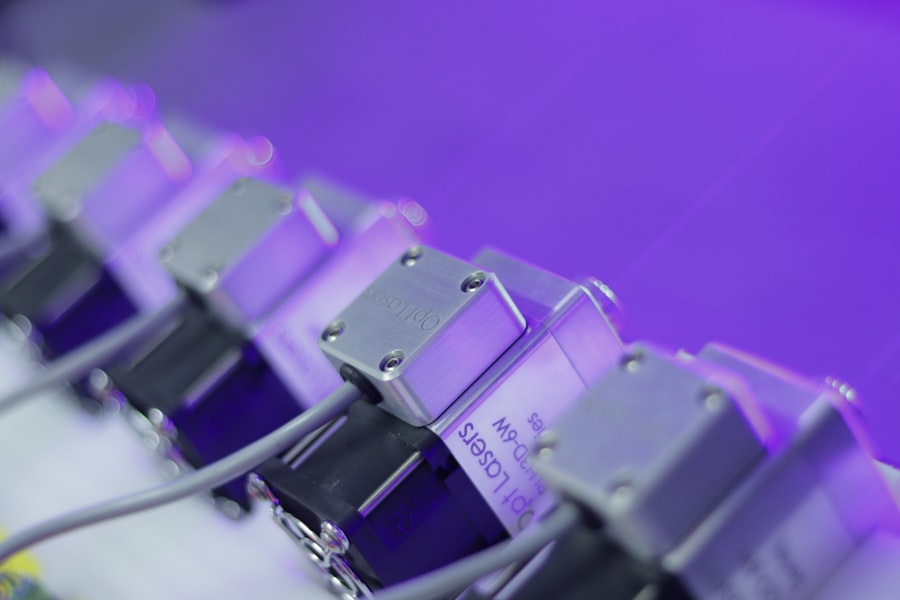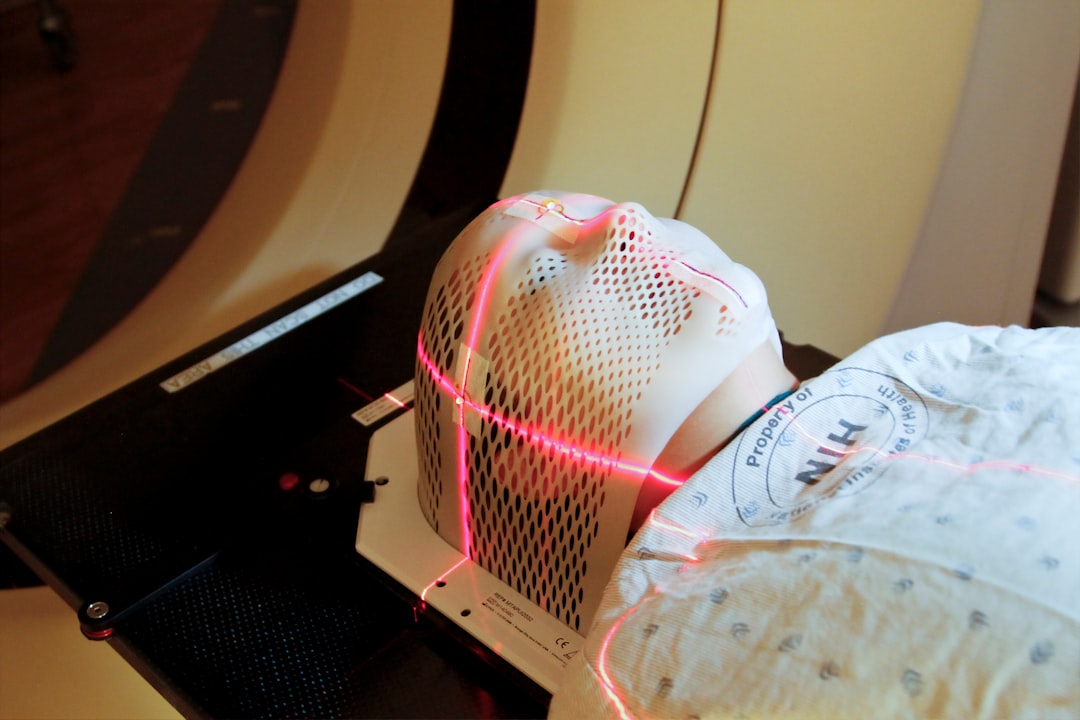Laser hair removal is a popular cosmetic procedure that utilizes concentrated beams of light to target and eliminate unwanted hair. As you consider this option, it’s essential to understand how the process works. During the treatment, a laser emits a specific wavelength of light that is absorbed by the pigment in your hair follicles.
This absorption generates heat, which damages the follicle and inhibits future hair growth. The procedure is typically performed in a series of sessions, as hair grows in cycles, and not all hair is in the same growth phase at the same time. Before undergoing laser hair removal, you will likely have a consultation with a qualified technician or dermatologist.
This initial meeting is crucial for assessing your skin type, hair color, and overall suitability for the procedure. You may also discuss your expectations and any concerns you have about pain or side effects. Understanding the process helps you prepare mentally and physically, ensuring that you are well-informed about what to expect during and after the treatment.
Key Takeaways
- Laser hair removal targets hair follicles to inhibit future hair growth
- Pain levels during laser hair removal can be affected by skin type and hair color
- Common misconceptions about laser hair removal pain include it being extremely painful
- Techniques to minimize discomfort during laser hair removal include using cooling gels and numbing creams
- Managing pain after laser hair removal treatment may involve using soothing lotions and avoiding sun exposure
Factors Affecting Pain Levels during Laser Hair Removal
Pain levels during laser hair removal can vary significantly from person to person, influenced by several factors. One of the primary determinants is your individual pain threshold. Some individuals may find the sensation of the laser to be mild and tolerable, while others may experience discomfort that feels more intense.
Additionally, the area being treated plays a significant role; sensitive areas such as the bikini line or underarms may elicit more discomfort compared to less sensitive regions like the legs or arms. Another factor to consider is the type of laser used during the procedure. Different lasers operate at varying wavelengths and intensities, which can affect how much heat is generated and how it interacts with your skin.
For instance, some lasers are designed to be less painful by incorporating cooling mechanisms that soothe the skin during treatment. The skill and experience of the technician performing the procedure also matter; a seasoned professional will know how to adjust settings for optimal comfort while still achieving effective results.
Common Misconceptions about Laser Hair Removal Pain
When contemplating laser hair removal, you may encounter various misconceptions regarding pain levels associated with the procedure. One common myth is that laser hair removal is excruciatingly painful, akin to being burned or stung repeatedly. While it’s true that some discomfort can occur, many individuals describe the sensation as similar to a rubber band snapping against the skin—sharp but brief.
Understanding this can help alleviate some of your anxiety about potential pain. Another misconception is that laser hair removal is only suitable for individuals with light skin and dark hair. While it’s true that lasers are most effective on this combination due to the contrast in pigmentation, advancements in technology have made it possible for people with various skin tones and hair colors to benefit from laser treatments.
This means that regardless of your skin type, you can explore this option without fear of excessive pain or ineffectiveness.
Techniques to Minimize Discomfort during Laser Hair Removal
| Technique | Description |
|---|---|
| Topical Anesthetics | Applying numbing creams or gels to the treatment area before the procedure |
| Cooling Devices | Using cooling devices to minimize discomfort and protect the skin during the procedure |
| Adjusting Laser Parameters | Customizing laser settings to match individual skin types and hair colors for a more comfortable experience |
| Chilled Air | Blowing chilled air onto the skin during the procedure to reduce discomfort and minimize pain |
If you’re concerned about pain during your laser hair removal sessions, there are several techniques you can employ to minimize discomfort. One effective method is to apply a topical numbing cream before your appointment. This cream can help dull the sensation in the treatment area, making the experience more bearable.
Be sure to discuss this option with your provider beforehand to ensure it’s appropriate for your specific situation. Another technique involves utilizing cooling devices during the procedure. Many modern laser systems come equipped with built-in cooling mechanisms that help reduce heat on the skin’s surface, thereby alleviating discomfort.
Additionally, some clinics offer external cooling devices that blow cold air onto the skin while the laser is in use. These methods can significantly enhance your comfort level and make the entire process more pleasant.
Managing Pain after Laser Hair Removal Treatment
After your laser hair removal session, you may experience some redness or swelling in the treated area, similar to a mild sunburn. Managing this post-treatment discomfort is crucial for a smooth recovery. Applying a soothing aloe vera gel or a cold compress can help alleviate any irritation you may feel.
It’s also advisable to avoid hot showers, saunas, or strenuous exercise for at least 24 hours following your treatment to minimize inflammation. In addition to topical treatments, over-the-counter pain relievers such as ibuprofen or acetaminophen can be effective in managing any lingering discomfort. However, always consult with your provider before taking any medication post-treatment to ensure it’s safe for you.
Staying hydrated and following any aftercare instructions provided by your technician will also contribute to a more comfortable recovery process.
Comparing Pain Levels of Laser Hair Removal with Other Hair Removal Methods

When weighing your options for hair removal, it’s helpful to compare pain levels associated with laser hair removal against other methods such as waxing, shaving, or electrolysis. Waxing often involves pulling hair out from the root, which can be quite painful for many individuals. The sensation can be sharp and prolonged, especially in sensitive areas.
In contrast, while laser hair removal may cause some discomfort, it is generally considered less painful than waxing due to its quick application and targeted approach. Shaving is another common method that many people use; however, it does not provide long-lasting results like laser hair removal does. While shaving itself may not be painful, it can lead to nicks, cuts, or razor burn, which can be uncomfortable in their own right.
Electrolysis, on the other hand, involves inserting a needle into each hair follicle and delivering an electric current to destroy it. This method can be quite painful and time-consuming compared to laser treatments. Overall, many individuals find that laser hair removal strikes a balance between effectiveness and manageable discomfort.
Tips for Choosing a Professional and Experienced Laser Hair Removal Provider
Selecting the right provider for your laser hair removal treatment is crucial for ensuring a positive experience and minimizing pain levels.
Look for providers who specialize in laser hair removal and have extensive experience with various skin types and hair colors.
A well-reviewed clinic will often have testimonials that speak to their professionalism and effectiveness. During your initial consultation, don’t hesitate to ask questions about their qualifications and experience with laser technology. Inquire about the types of lasers they use and whether they have options tailored to different skin tones and sensitivities.
A reputable provider will be transparent about their techniques and will take the time to address any concerns you may have regarding pain management or aftercare.
Real-life Experiences and Testimonials about Laser Hair Removal Pain
Hearing real-life experiences from individuals who have undergone laser hair removal can provide valuable insight into what you might expect regarding pain levels. Many people report feeling nervous before their first session but are pleasantly surprised by how manageable the discomfort turns out to be. For instance, one individual described their experience as “a quick pinch” rather than an unbearable sensation, emphasizing that it was over before they knew it.
Testimonials often highlight how effective pain management techniques made a significant difference in their comfort levels during treatment. Some clients shared that using numbing cream beforehand allowed them to relax during their sessions, while others appreciated the cooling devices used by their providers. Overall, these personal accounts reveal that while some discomfort is inevitable, many individuals find laser hair removal to be a worthwhile investment in achieving smooth skin without the hassle of traditional methods.
In conclusion, understanding the intricacies of laser hair removal can help you navigate your journey with confidence. By considering factors such as pain levels, misconceptions, and techniques for minimizing discomfort, you can make informed decisions about your treatment options. With careful selection of a qualified provider and realistic expectations based on real-life experiences, you can embark on this path toward smoother skin with greater ease and assurance.
If you are considering laser hair removal and wondering if it hurts, you may want to check out this article on inlaserhairremoval.com that discusses the pain level associated with the procedure. This article provides valuable insights and tips on managing any discomfort during laser hair removal sessions.
FAQs
What is laser hair removal?
Laser hair removal is a cosmetic procedure that uses a concentrated beam of light (laser) to remove unwanted hair. The laser targets the pigment in the hair follicle, damaging the follicle and inhibiting future hair growth.
Does laser hair removal hurt?
The sensation experienced during laser hair removal can vary from person to person. Some individuals may feel a slight discomfort or a stinging sensation during the procedure, while others may find it more tolerable. However, many people report that the discomfort is minimal and well worth the long-term results.
What can be done to minimize discomfort during laser hair removal?
There are several ways to minimize discomfort during laser hair removal. Some clinics may offer numbing creams or gels to apply to the treatment area prior to the procedure. Additionally, choosing a reputable and experienced provider who uses advanced laser technology can help minimize discomfort.
Are there any side effects or risks associated with laser hair removal?
While laser hair removal is generally considered safe, there are potential side effects and risks to be aware of. These may include temporary redness, swelling, and skin irritation in the treated area. In rare cases, blistering, scarring, or changes in skin pigmentation may occur. It is important to discuss any concerns with a qualified provider before undergoing treatment.
How many sessions are typically needed for laser hair removal?
The number of sessions needed for laser hair removal can vary depending on factors such as the individual’s hair type, skin color, and the treatment area. On average, most people require multiple sessions, typically spaced several weeks apart, to achieve optimal results.






